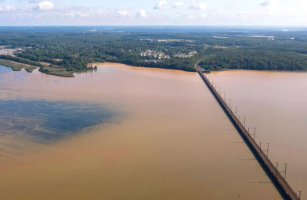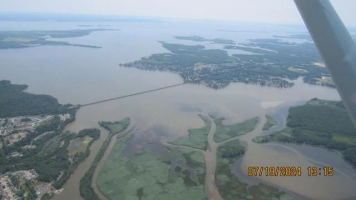Stormwater management is a critical aspect of environmental protection, mandated by both state and federal regulations across the United States. Every state has established specific rules to manage stormwater runoff, especially from construction and redevelopment sites. These regulations aim to mitigate the impact of urban development on water quality and to prevent flooding, erosion, and pollution.
However, while these mandates are clear at the state level, their enforcement often falls to local municipalities, where the building department plays a crucial role. Building departments typically focus on ensuring compliance with local building codes, yet stormwater management is sometimes viewed as an ancillary responsibility—if it is recognized at all.
What many building officials may not realize is that local stormwater ordinances are not just guidelines but legal requirements, often mandated by state statutes. These ordinances require municipalities to enforce stormwater retention and treatment standards that align with state and federal regulations. As a result, building departments must actively incorporate stormwater management considerations into their plan review, inspection processes, and final approvals.
For example, projects that disturb more than one acre of land generally trigger the need for a stormwater management plan. This plan must be reviewed and approved by the building department to ensure it meets all applicable regulations. Furthermore, ongoing site inspections should include checks for compliance with stormwater control measures to prevent violations that could lead to environmental damage and legal repercussions for the municipality.
Stormwater retention requirements for the construction of single-family homes on lots smaller than 1 acre vary depending on the specific regulations of the state and local jurisdiction. However, some general principles and standards are commonly applied across different states and municipalities.
However, while these mandates are clear at the state level, their enforcement often falls to local municipalities, where the building department plays a crucial role. Building departments typically focus on ensuring compliance with local building codes, yet stormwater management is sometimes viewed as an ancillary responsibility—if it is recognized at all.
What many building officials may not realize is that local stormwater ordinances are not just guidelines but legal requirements, often mandated by state statutes. These ordinances require municipalities to enforce stormwater retention and treatment standards that align with state and federal regulations. As a result, building departments must actively incorporate stormwater management considerations into their plan review, inspection processes, and final approvals.
For example, projects that disturb more than one acre of land generally trigger the need for a stormwater management plan. This plan must be reviewed and approved by the building department to ensure it meets all applicable regulations. Furthermore, ongoing site inspections should include checks for compliance with stormwater control measures to prevent violations that could lead to environmental damage and legal repercussions for the municipality.
Stormwater retention requirements for the construction of single-family homes on lots smaller than 1 acre vary depending on the specific regulations of the state and local jurisdiction. However, some general principles and standards are commonly applied across different states and municipalities.
- Size Thresholds: For many states, stormwater management regulations typically kick in for developments disturbing an area of 1 acre or more. However, some local jurisdictions may have lower thresholds or specific criteria, particularly in environmentally sensitive areas. For example, in Florida, stormwater retention may be required for any project that increases impervious surfaces, even if the lot is smaller than 1 acre .
- Volume Control Requirements: Single-family homes on smaller lots may be required to manage a specific volume of stormwater runoff. This can involve retaining or treating the first inch of runoff or a specified percentage of runoff volume based on impervious area. The goal is often to mimic pre-development hydrology and prevent any increase in runoff volume post-construction .
- Low Impact Development (LID): Many jurisdictions encourage or mandate the use of LID practices to manage stormwater on-site. These practices include rain gardens, permeable pavements, and infiltration trenches, designed to capture and treat runoff at the source. LID practices are particularly useful for smaller lots where traditional stormwater infrastructure may not be feasible .
- State and Local Ordinances: It’s crucial to note that while state-level requirements may set broad standards, municipalities often have additional ordinances that require more stringent stormwater management practices. These local regulations might mandate retention or detention measures even for developments disturbing less than 1 acre, particularly in areas prone to flooding or with a high density of development .
Last edited:




